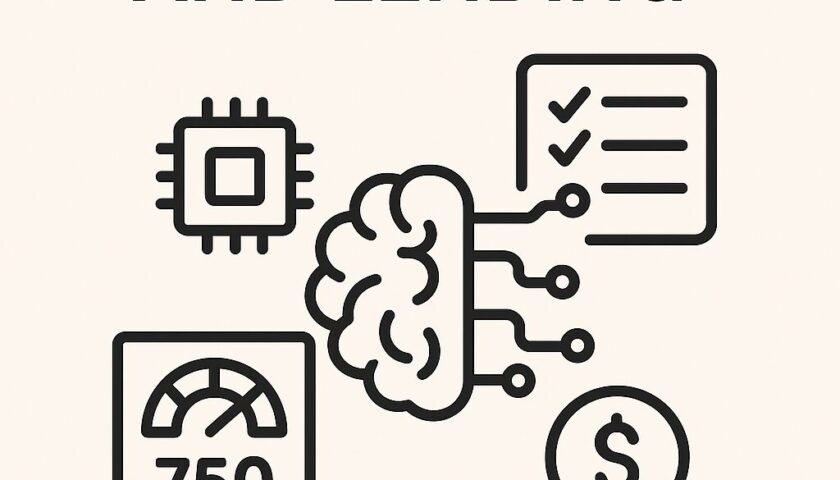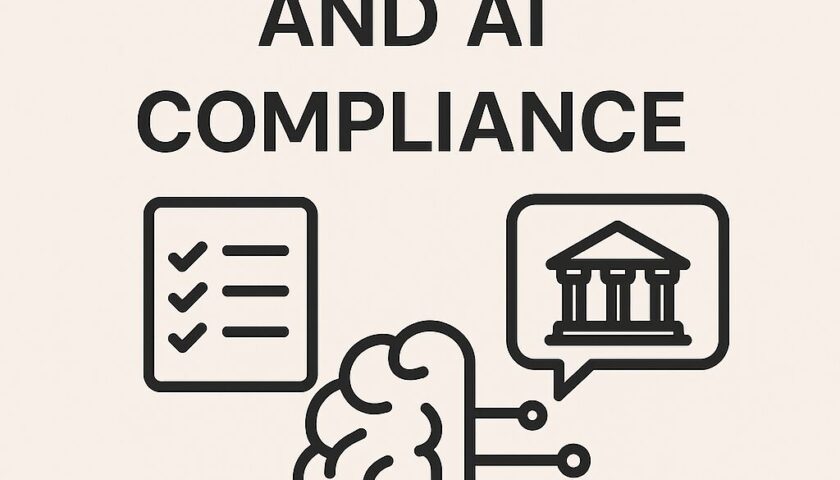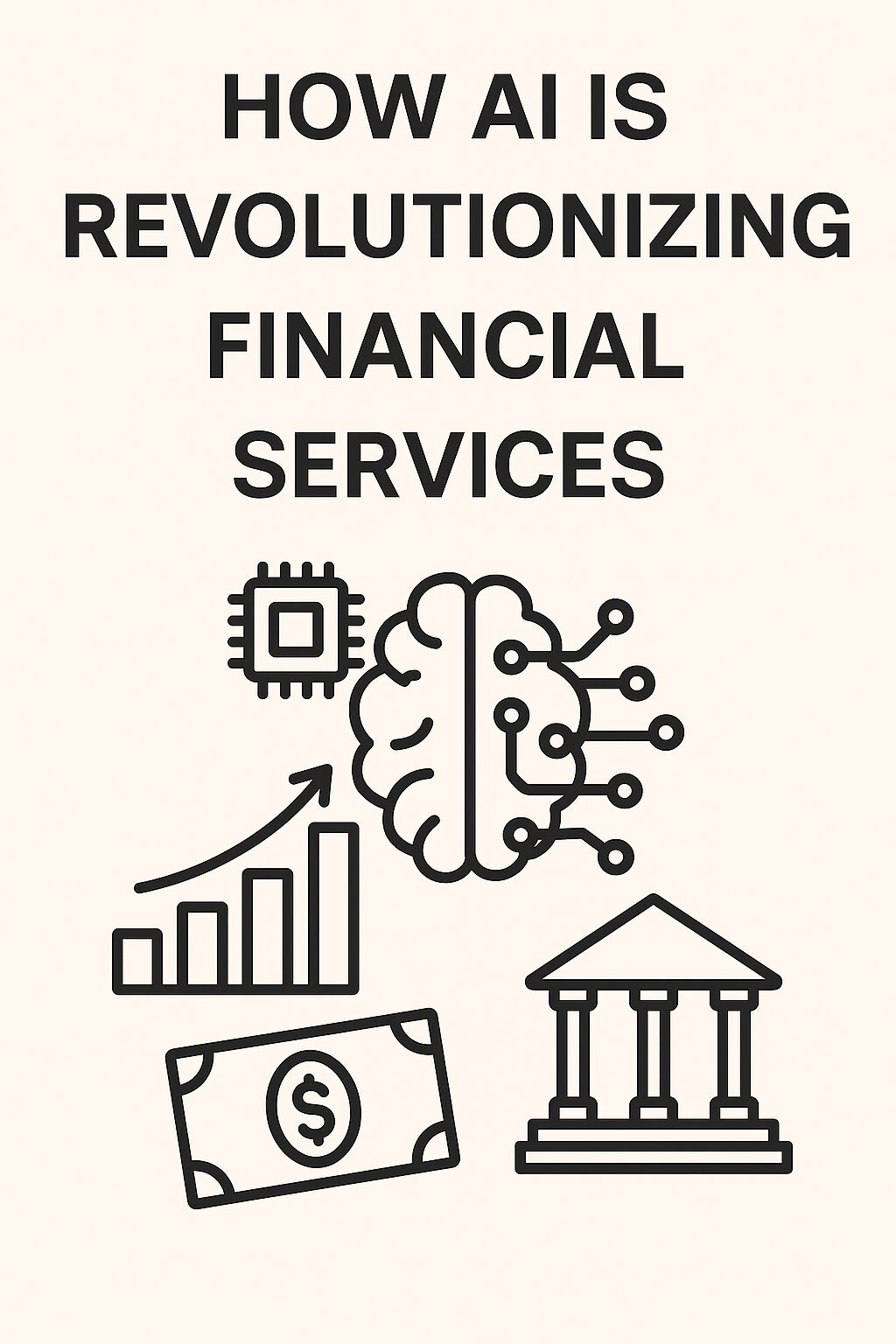Table of Contents
- Introduction
- AI in Banking: Transforming Customer Experience 2.1 Chatbots and Virtual Assistants 2.2 Personalized Financial Products 2.3 Enhanced Customer Support
- AI-Powered Risk Management and Fraud Detection 3.1 Real-Time Fraud Monitoring 3.2 Predictive Risk Assessment 3.3 Anti-Money Laundering and Compliance
- Robo-Advisors: Automated Investment Strategies 4.1 How Robo-Advisors Work 4.2 Benefits and Cost-Effectiveness 4.3 Personalization and Portfolio Management
- AI in Credit Scoring and Lending 5.1 Alternative Data and Machine Learning Models 5.2 Fairness, Transparency, and Explainability 5.3 Accelerated Loan Approvals
- Predictive Analytics for Smarter Decision-Making 6.1 Customer Behavior Forecasting 6.2 Market Trend Analysis 6.3 Use Cases in Banking and Asset Management
- Personalized Marketing and Customer Segmentation 7.1 Targeted Campaigns with AI 7.2 Recommendation Engines 7.3 Optimizing Customer Lifetime Value
- Operational Efficiency through Automation 8.1 Back-Office Process Automation 8.2 Intelligent Document Processing 8.3 Workflow and Task Optimization
- Regulatory Technology (RegTech) and AI Compliance 9.1 Automated Reporting and Monitoring 9.2 Real-Time Regulatory Intelligence 9.3 Reducing Compliance Costs
- Challenges and Ethical Considerations 10.1 Data Privacy and Security 10.2 Algorithmic Bias and Fairness 10.3 Transparency and Accountability
- Future Trends: The Next Frontier of AI in Finance 11.1 Quantum Computing and AI 11.2 AI and Blockchain Integration 11.3 Digital Twins for Financial Modeling
- Conclusion
1. Introduction
Artificial Intelligence (AI) is no longer a futuristic concept reserved for science fiction. In 2025, AI in financial services has become a cornerstone for innovation in banking, investment strategies, and insurance. From personalized banking apps and robo-advisors to AI-powered fraud detection and real-time risk management, this technology is reshaping how financial institutions operate and how customers interact with money.
Whether you’re a retail banking customer seeking smarter ways to manage your accounts or an institutional investor looking to harness machine learning for alpha generation, understanding how AI transforms financial services is essential. In this comprehensive guide, we’ll explore the key technologies, real-world applications, benefits, and challenges of AI adoption across the finance industry. We’ll also peek into emerging trends that promise to revolutionize the sector even further. By the end, you’ll appreciate how smarter banking and AI-driven investment strategies are redefining the customer experience, enhancing security, and driving operational efficiency.
2. AI in Banking: Transforming Customer Experience

2.1 Chatbots and Virtual Assistants
In 2025, AI-driven chatbots and virtual assistants have matured into sophisticated conversational agents. Embedded within banking apps and websites, they can:
- Handle routine inquiries (e.g., balance checks, transaction histories) in seconds.
- Guide users through loan applications or credit card upgrades.
- Deliver personalized financial advice based on real-time data.
These virtual assistants use Natural Language Processing (NLP) and machine learning to understand context, sentiment, and intent. Unlike keyword-based systems of the past, modern chatbots can manage multi-turn conversations, escalate to human agents when necessary, and learn from each interaction to improve accuracy. The result is 24/7 customer support, reduced wait times, and significant cost savings for banks.
2.2 Personalized Financial Products
AI enables banks to move beyond one-size-fits-all products. By analyzing customer data—transaction history, spending patterns, credit scores, even social media signals—machine learning models can:
- Recommend tailored savings plans, credit offers, and investment portfolios.
- Predict life events (weddings, home purchases) and suggest relevant financial products proactively.
- Adjust interest rates dynamically based on individual risk profiles and market conditions.
Personalized banking inspires customer loyalty and increases cross-sell and up-sell rates. Studies show that clients offered customized solutions are 30–50% more likely to adopt additional services.
2.3 Enhanced Customer Support
Beyond chatbots, AI analyzes call center transcripts, emails, and social media posts to identify common pain points. Sentiment analysis tools highlight emerging issues—such as confusion over new fees—allowing banks to preemptively update FAQs or adjust communication strategies. Voice analytics can even detect caller frustration in real time, prompting supervisors to intervene before customer churn.
3. AI-Powered Risk Management and Fraud Detection
3.1 Real-Time Fraud Monitoring
Traditional rule-based fraud systems rely on static thresholds—flag transactions over $10,000, for example. In contrast, AI leverages anomaly detection and behavioral biometrics to identify suspicious activities instantly:
- Pattern Recognition: Machine learning models learn each user’s spending cadence. A purchase in a foreign country triggers an immediate alert if it deviates drastically from normal behavior.
- Device and Location Analytics: By cross-referencing device fingerprints, IP addresses, and geolocation, AI can detect hidden proxies or SIM swapping attempts.
- Continuous Authentication: Beyond passwords, AI monitors typing cadence, touchscreen gestures, and even heart-rate sensors on wearables to validate identity throughout a session.
By minimizing false positives and enabling rapid response, AI-driven fraud detection slashes losses while preserving customer satisfaction.
3.2 Predictive Risk Assessment
Banks must constantly assess credit, market, and operational risks. AI enhances risk management through:
- Credit Default Predictions: Using vast datasets—including payment histories, utility bills, and alternative data—machine learning algorithms forecast default probabilities with higher precision than FICO scores alone.
- Market Volatility Modeling: Deep learning techniques analyze news sentiment, economic indicators, and trading patterns to anticipate market shifts and adjust trading strategies in real time.
- Stress Testing: AI simulates thousands of macroeconomic scenarios, revealing portfolio vulnerabilities and guiding hedging decisions.
The outcome is a dynamic risk posture that adapts instantly to evolving conditions.
3.3 Anti-Money Laundering and Compliance
AI streamlines Anti-Money Laundering (AML) and Know Your Customer (KYC) processes by:
- Document Verification: Computer vision models read IDs, passports, and utility bills in seconds, flagging forgeries.
- Entity Resolution: Graph-based algorithms map complex ownership structures, uncovering shell companies and hidden relationships.
- Transaction Monitoring: NLP scans unstructured data—news articles, sanctions lists—automatically updating watchlists and identifying suspicious counterparties.
This RegTech revolution reduces manual workload, shortens onboarding times from weeks to hours, and strengthens regulatory compliance.
4. Robo-Advisors: Automated Investment Strategies
4.1 How Robo-Advisors Work
Robo-advisors are AI-driven platforms that create and manage investment portfolios with minimal human intervention. The typical process involves:
- Client Profiling: An online questionnaire gathers goals, risk tolerance, time horizon, and liquidity needs.
- Algorithmic Portfolio Construction: Based on Modern Portfolio Theory and factor analysis, the system selects asset classes (equities, bonds, real estate, commodities).
- Automated Rebalancing: Machine learning monitors market conditions and portfolio drift, executing trades to maintain target allocations.
- Tax Optimization: AI implements strategies like tax-loss harvesting to improve after-tax returns.
4.2 Benefits and Cost-Effectiveness
Compared to traditional wealth management, robo-advisors offer:
- Lower Fees: Automated management often costs 0.25–0.50% AUM versus 1% or more.
- Accessibility: Minimum investment thresholds can be as low as $500.
- Transparency: Clients track performance in real time via intuitive dashboards.
These platforms democratize investment strategies, enabling mass-market adoption of quantitative approaches once reserved for high-net-worth individuals.
4.3 Personalization and Portfolio Management
Advanced robo-advisors leverage AI to go beyond static risk profiles:
- Dynamic Risk Profiling: Using behavioral analytics, the system adjusts risk exposure if it senses overreaction to market swings.
- Thematic Investing: Clients can invest in AI-curated themes—clean energy, biotech breakthroughs, emerging markets—backed by predictive analysis of growth drivers.
- Goal-Based Planning: AI integrates cash-flow projections (savings rate, expenses) to recommend optimal contribution schedules for milestones like retirement or education.
5. AI in Credit Scoring and Lending

5.1 Alternative Data and Machine Learning Models
AI transforms lending by incorporating nontraditional datasets:
- Utility and Telecom Payments: Steady bill payments indicate financial responsibility for underbanked populations.
- Social Media and E-Commerce Activity: Natural language processing gauges sentiment and spending patterns.
- Psychometric Assessments: Behavioral questionnaires feed into ML models to assess creditworthiness.
These inputs enable more inclusive lending, expanding credit access in emerging markets and reducing default rates.
5.2 Fairness, Transparency, and Explainability
With increased scrutiny on algorithmic bias, AI lenders adopt:
- Explainable AI (XAI): Techniques like SHAP values show which factors drove a credit decision.
- Bias Mitigation Frameworks: Regular audits compare outcomes across demographic groups, retraining models to eliminate disparate impacts.
- Human-in-the-Loop Reviews: Edge cases flagged by AI undergo manual underwriting to balance efficiency with oversight.
Such measures foster trust and regulatory approval while maintaining speed and scalability.
5.3 Accelerated Loan Approvals
Machine learning reduces underwriting time drastically:
- Instant Approvals: Simple personal loans can be approved in minutes.
- Automated Document Verification: OCR and NLP extract and validate income statements, tax forms, and collateral documents.
- Risk-Based Pricing: Dynamic interest rates reflect real-time risk profiles, rewarding low-risk borrowers with lower rates.
This seamless digital experience raises customer satisfaction and drives loan volumes.
6. Predictive Analytics for Smarter Decision-Making
6.1 Customer Behavior Forecasting
Banks use predictive analytics to anticipate customer needs:
- Churn Prediction: Machine learning models spot early signs of account closure—like reduced logins or declining balances—triggering retention campaigns.
- Cross-Sell and Up-Sell Opportunities: By analyzing transaction data, AI identifies which customers are primed for credit cards, mortgages, or wealth-management services.
- Life Event Detection: Recognizing financial milestones (wedding deposits, tuition payments), banks suggest relevant solutions such as personal loans or education savings plans.
6.2 Market Trend Analysis
Asset managers leverage AI to forecast market movements:
- Sentiment Analysis: NLP mines news articles, earnings calls, and social chatter to gauge investor mood and detect rumor-driven anomalies.
- Time-Series Forecasting: Recurrent neural networks (RNNs) and transformer models predict price trajectories for equities, commodities, and currencies.
- Event-Driven Strategies: AI scans global news feeds for geopolitical events, earnings surprises, and regulatory changes to trigger algorithmic trades within milliseconds.
6.3 Use Cases in Banking and Asset Management
- Liquidity Management: Predictive models help treasurers forecast cash needs across branches, optimizing interbank funding.
- Deposit Rate Forecasting: Banks set interest rates dynamically based on projected deposit inflows and market movements.
- Portfolio Stress Testing: AI simulates extreme market scenarios, revealing vulnerabilities and guiding hedging strategies.
7. Personalized Marketing and Customer Segmentation
7.1 Targeted Campaigns with AI
AI-powered segmentation divides customers into micro-segments based on behavior, life stage, and value:
- Micro-targeting: Personalized email and push notifications showcase relevant offers—such as a travel rewards card when flight bookings spike.
- A/B Testing at Scale: Machine learning selects optimal messaging, timing, and channel for each segment, boosting conversion rates by up to 25%.
- Churn Mitigation: Predictive models trigger retention offers for at-risk customers—waived fees or preferential loan terms.
7.2 Recommendation Engines
Similar to e-commerce giants, banks use recommendation engines to suggest:
- Next Best Action: Whether to open a savings account, refinance a mortgage, or invest in a mutual fund.
- Financial Wellness Content: AI curates articles and videos tailored to each customer’s financial literacy level and goals.
- Advisor Matchmaking: Retail clients get matched with wealth advisors whose expertise aligns with their portfolio size and risk appetite.
7.3 Optimizing Customer Lifetime Value
By continually learning from behavior and feedback, AI increases average revenue per user (ARPU) through:
- Dynamic Pricing Models: Adjusting fees and rates based on engagement and loyalty.
- Gamification: Reward programs that use AI to set personalized challenges and milestones—such as saving streak badges.
- Predictive Loyalty Scoring: Forecasting which customers will remain profitable over years and focusing acquisition efforts accordingly.
8. Operational Efficiency through Automation
8.1 Back-Office Process Automation
Robotic Process Automation (RPA) combined with AI drives down costs:
- Transaction Reconciliation: Bots handle high-volume matching of trades, payments, and ledger entries.
- Account Maintenance: Automated updates for address changes, beneficiary additions, and compliance checks.
- Report Generation: AI scripts compile regulatory filings, management dashboards, and audit trails.
This end-to-end automation frees employees to focus on strategic initiatives instead of repetitive tasks.
8.2 Intelligent Document Processing
Banks process vast amounts of unstructured data—loan applications, contracts, emails. AI-powered Optical Character Recognition (OCR) and NLP can:
- Extract Key Fields: Names, dates, amounts, and legal clauses.
- Classify Documents: Route mortgage papers, KYC forms, or dispute letters to the appropriate teams.
- Flag Anomalies: Identify missing signatures, inconsistent data, or high-risk clauses.
Accuracy rates now exceed 95%, dramatically reducing manual review time and errors.
8.3 Workflow and Task Optimization
Machine learning analyzes historical task data to:
- Predict Processing Times: Estimate backlog and allocate resources accordingly.
- Balance Workloads: Match ticket complexity with agent expertise and availability.
- Optimize Scheduling: Forecast peak call and transaction volumes to staff customer centers and trading desks optimally.
9. Regulatory Technology (RegTech) and AI Compliance

9.1 Automated Reporting and Monitoring
Regulators demand real-time visibility into banks’ exposures and transactions. AI platforms now:
- Ingest Multiple Data Sources: Trading systems, payment gateways, emails, and chat logs.
- Generate Compliance Reports: Tailored to jurisdictional requirements (Basel III, MiFID II, Dodd-Frank).
- Monitor Policy Changes: NLP scans regulatory websites and alerts compliance teams to new rules.
9.2 Real-Time Regulatory Intelligence
AI assistants can:
- Answer Compliance Queries: On-demand explanations of rules and procedures.
- Audit Trails: Immutable logs of who accessed data, what models were used, and how decisions were made.
- Automated Risk Scoring: Assign risk levels to counterparties and transactions based on policy and historical breaches.
9.3 Reducing Compliance Costs
By shifting from manual reviews to AI-driven analysis, large institutions report up to 50% cost savings in compliance operations. Faster onboarding, fewer fines, and improved audit outcomes justify further RegTech investment.
10. Challenges and Ethical Considerations
10.1 Data Privacy and Security
AI’s hunger for data raises privacy concerns:
- Regulatory Compliance: GDPR, CCPA, and other data protection laws restrict what customer data can be used for.
- Secure Data Governance: Banks implement encryption, role-based access controls, and anonymization techniques.
- Third-Party Risk: Vetting AI vendors to ensure they meet security standards and do not introduce vulnerabilities.
10.2 Algorithmic Bias and Fairness
Without careful design, AI models can perpetuate or amplify bias:
- Training Data Quality: Historical data reflecting past prejudices leads to unfair outcomes.
- Bias Detection Tools: Statistical tests and fairness metrics identify and mitigate disparate impacts across demographics.
- Human Oversight: Regular audits and challenge processes ensure accountability.
10.3 Transparency and Accountability
Black-box AI erodes trust. To counter this, financial institutions adopt:
- Explainable Models: Techniques like LIME or SHAP break down predictions into human-readable factors.
- Governance Frameworks: AI ethics committees evaluate new models for potential harm.
- Documentation and Traceability: Versioning, model cards, and decision logs provide a complete audit trail.
11. Future Trends: The Next Frontier of AI in Finance
11.1 Quantum Computing and AI
As quantum processors become commercially viable, they promise to supercharge AI:
- Portfolio Optimization: Solving complex multi-factor models infeasible for classical computers.
- Risk Simulation: Running millions of Monte Carlo scenarios in minutes.
- Secure Communication: Quantum key distribution for unhackable data transmission.
11.2 AI and Blockchain Integration
Combining AI with distributed ledger technology unlocks:
- Smart Contract Oracles: AI feeds real-world data into self-executing contracts reliably.
- Automated Asset Tokenization: AI valuations for real estate, art, or commodities seamlessly minted on blockchains.
- Decentralized Identity: Verifiable credentials managed by AI to streamline KYC across institutions.
11.3 Digital Twins for Financial Modeling
“Digital twins” are virtual replicas of financial systems:
- Stress Testing: Simulate market shocks on a bank’s entire IT and organizational structure.
- Process Improvement: Experiment with new loan workflows or trading strategies in a risk-free environment.
- Real-Time Monitoring: Mirror live operations to detect inefficiencies and anomalies instantly.
12. Conclusion
AI in financial services has moved well beyond pilot projects. Today’s banks, wealth managers, and insurtech startups leverage machine learning, natural language processing, computer vision, and robotic automation to deliver smarter banking and AI-driven investment strategies at unprecedented scale. From personalized chatbots that guide customers through complex products to robo-advisors that rebalance portfolios instantly, AI is elevating every facet of the client journey.
Risk management has evolved into a proactive, real-time discipline fueled by anomaly detection and predictive analytics. Fraud losses are curtailed through behavioral biometrics and continuous authentication. Lending decisions are accelerated and made fairer by alternative data models and explainable AI frameworks. Meanwhile, operational back-offices hum with intelligent process automation, reducing costs and errors while refocusing human talent on innovation.
Despite challenges around data privacy, algorithmic bias, and regulatory compliance, the finance sector’s commitment to transparency, ethical design, and robust governance paves the way for responsible AI adoption. As we look to the horizon—quantum computing, AI-blockchain convergence, digital twins—the pace of transformation shows no signs of slowing.
For financial institutions, the mandate is clear: invest in AI capabilities now or risk being left behind. For customers, the benefits are tangible: smarter insights, faster service, and more personalized wealth-building strategies. As AI continues to mature, it will unlock new business models, deepen customer relationships, and redefine what it means to manage, move, and grow money.
The revolution is in full swing. Whether you’re an executive shaping your firm’s AI roadmap, a developer building the next generation of fintech solutions, or a consumer navigating digital banking options, one thing is certain: AI is the engine driving the future of financial services. Embrace it, understand it, and harness its power to create more resilient, inclusive, and intelligent financial ecosystems.


